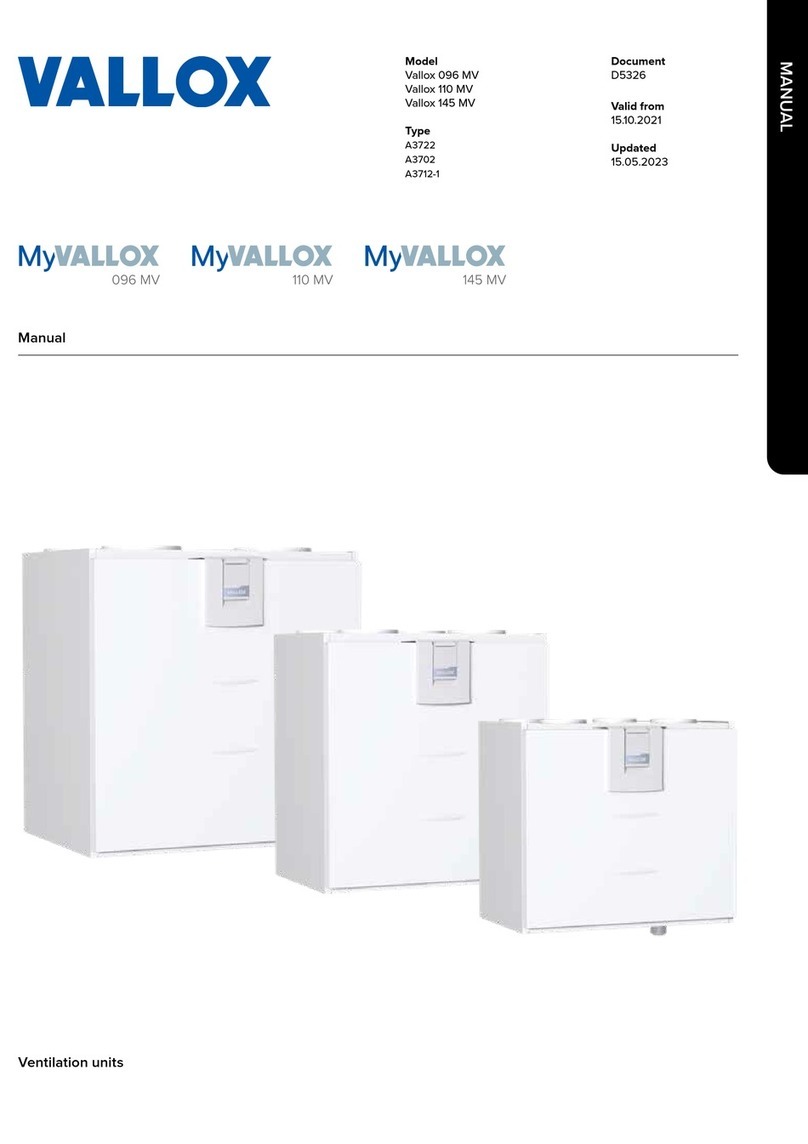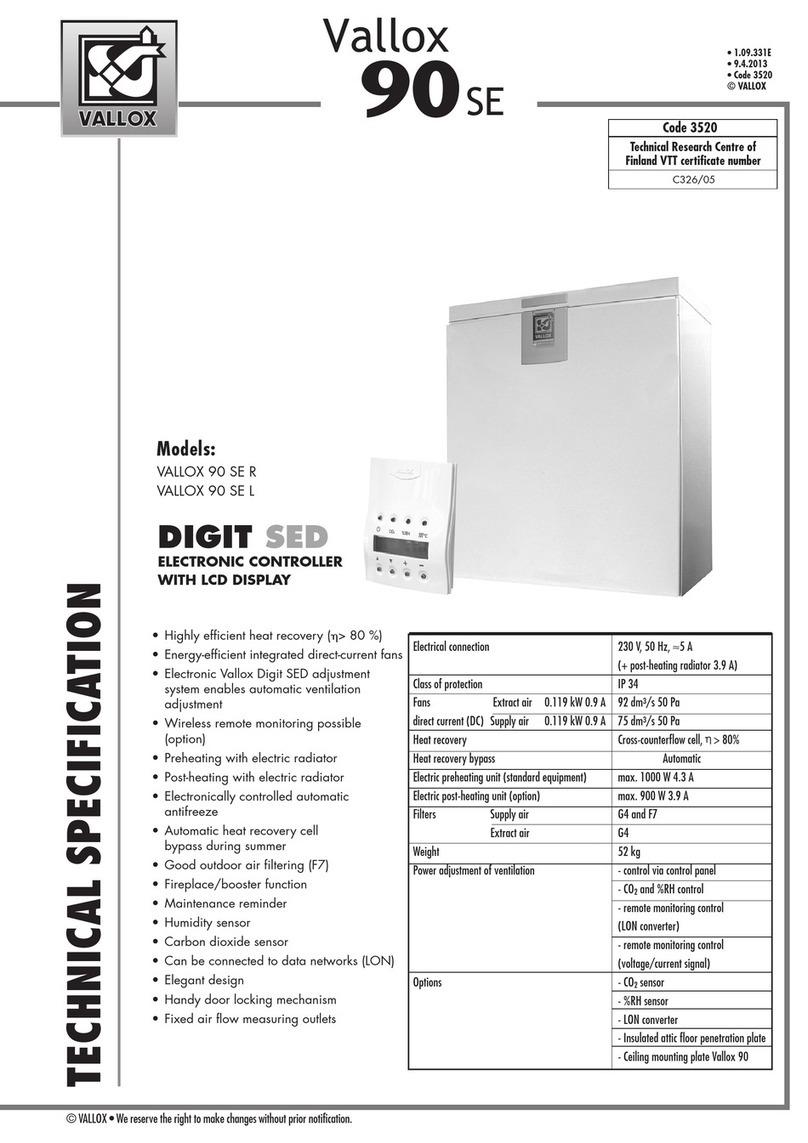Vallox A3741 User manual
Other Vallox Fan manuals

Vallox
Vallox 096 MV User manual

Vallox
Vallox 70 COMPACT R/L User manual
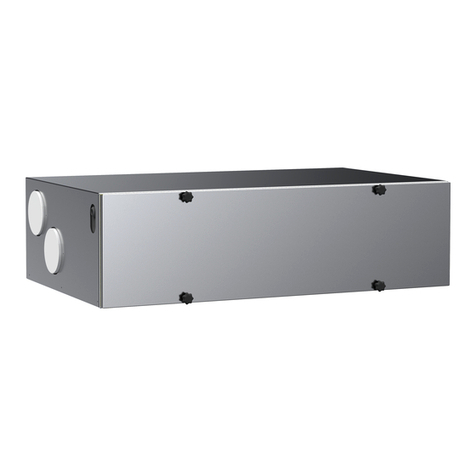
Vallox
Vallox Vallox TSK Multi 50 MC R Operating instructions
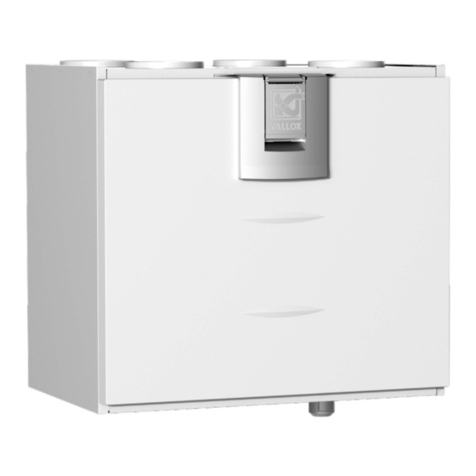
Vallox
Vallox 096 MC Series User manual
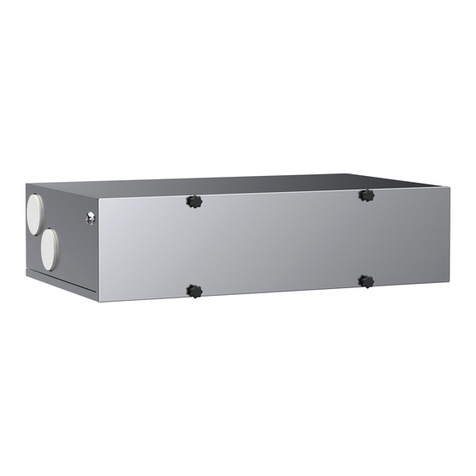
Vallox
Vallox Vallox TSK Multi 50 MV EH User manual
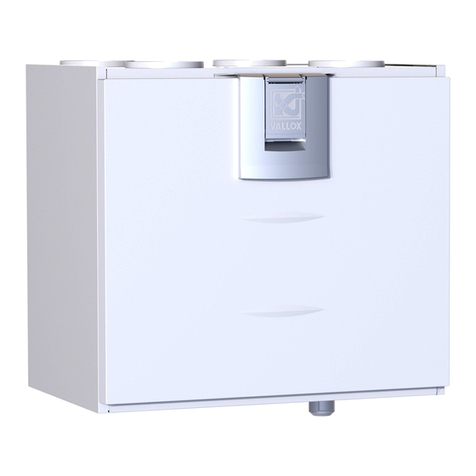
Vallox
Vallox 096 MC R Owner's manual

Vallox
Vallox Vallox TSK Multi 50 MV EH User manual
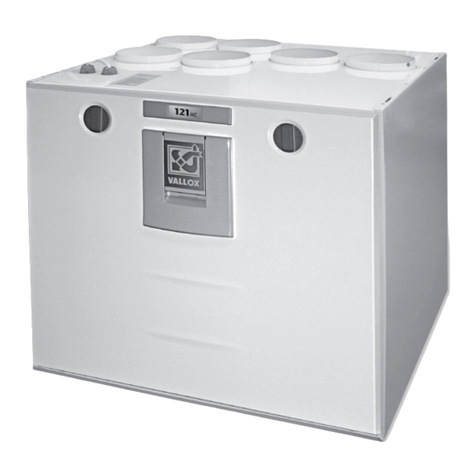
Vallox
Vallox 121 MC Series Owner's manual

Vallox
Vallox 51 MV User manual
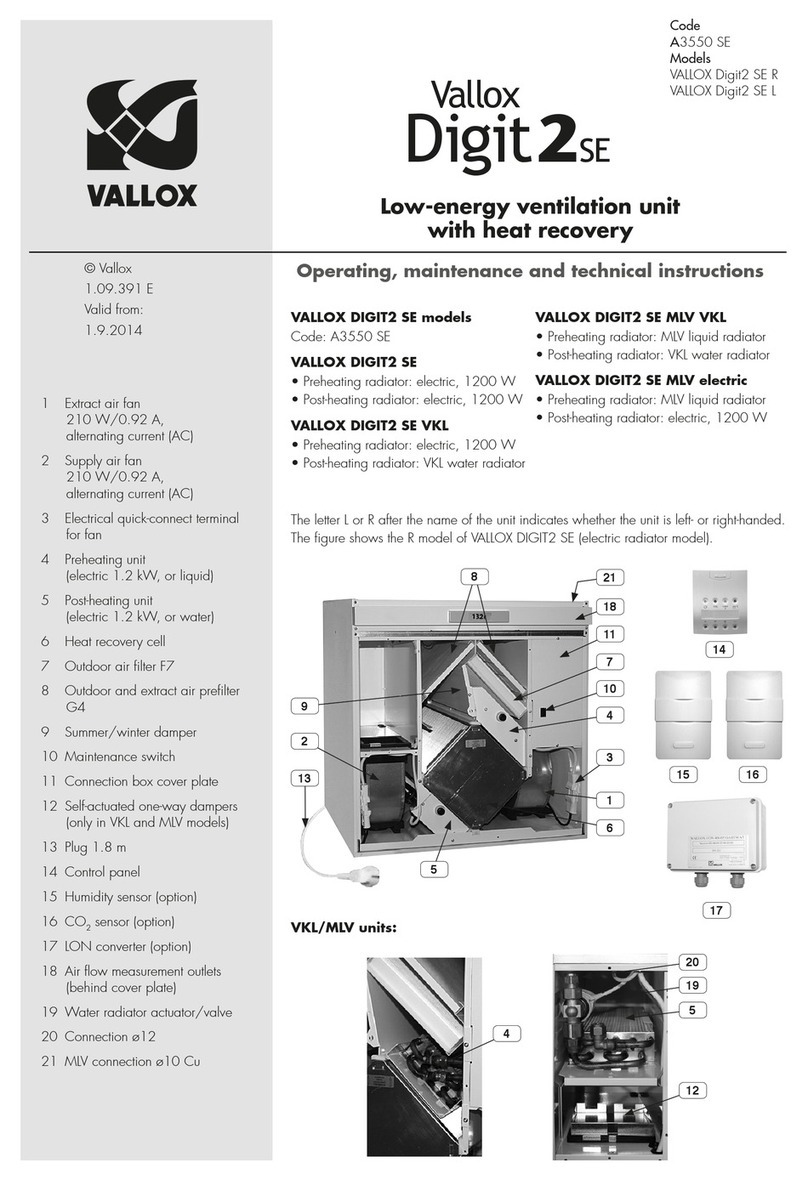
Vallox
Vallox DIGIT2 SE VKL Owner's manual
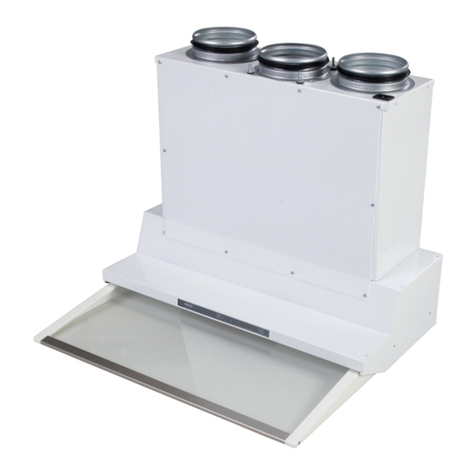
Vallox
Vallox Capto TTC User manual

Vallox
Vallox 3756 User manual

Vallox
Vallox 75 Specification sheet
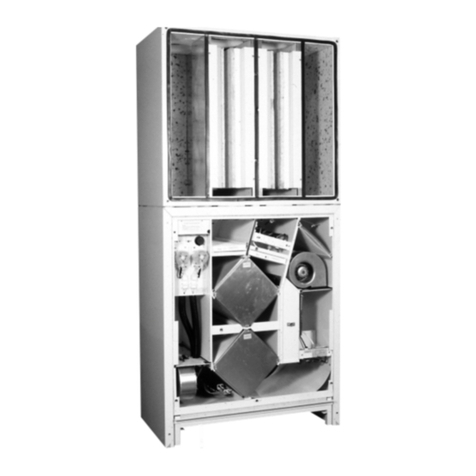
Vallox
Vallox 252 D Series Specification sheet

Vallox
Vallox 3603 User manual

Vallox
Vallox Exxeo 150 User manual
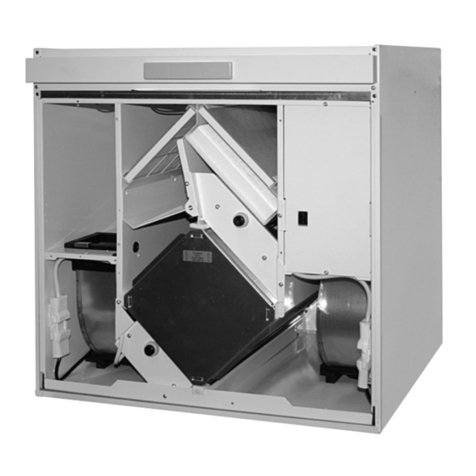
Vallox
Vallox 132 E Series Specification sheet
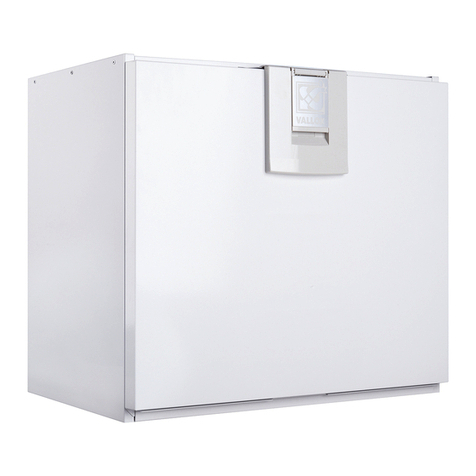
Vallox
Vallox 096 SE R Owner's manual
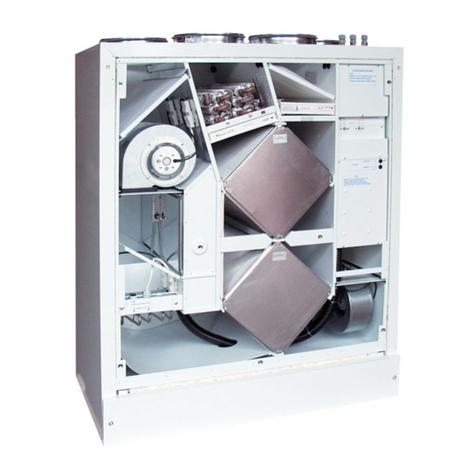
Vallox
Vallox 252 M User manual
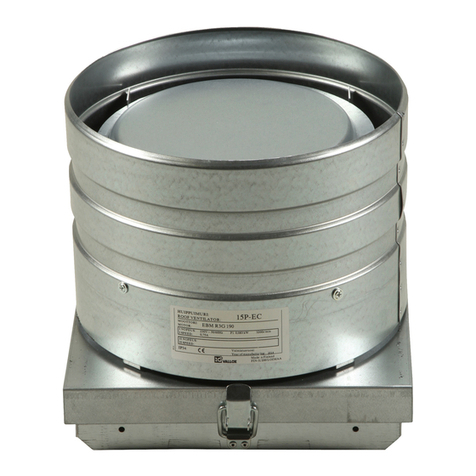
Vallox
Vallox 15P-EC User manual
Popular Fan manuals by other brands

Harbor Breeze
Harbor Breeze RLG52NWZ5L manual

Allen + Roth
Allen + Roth L1405 instruction manual

ViM
ViM KUBAIR F400 ECOWATT Technical manual

HIDRIA
HIDRIA R10R-56LPS-ES50B-04C10 user guide

BLAUBERG Ventilatoren
BLAUBERG Ventilatoren CENTRO-M 100 L user manual

Triangle Engineering
Triangle Engineering HEAT BUSTER SPL Series owner's manual

